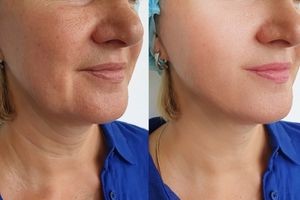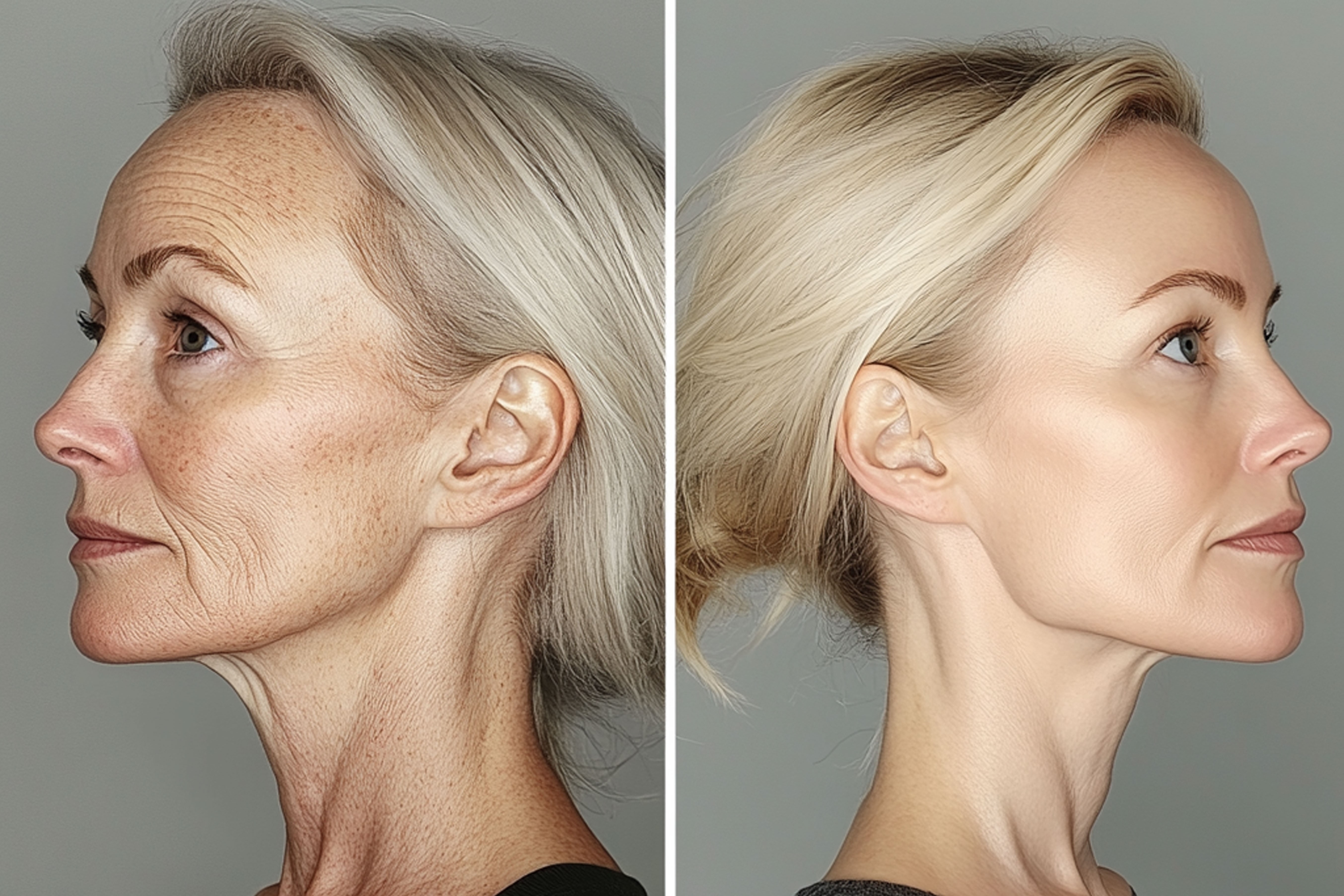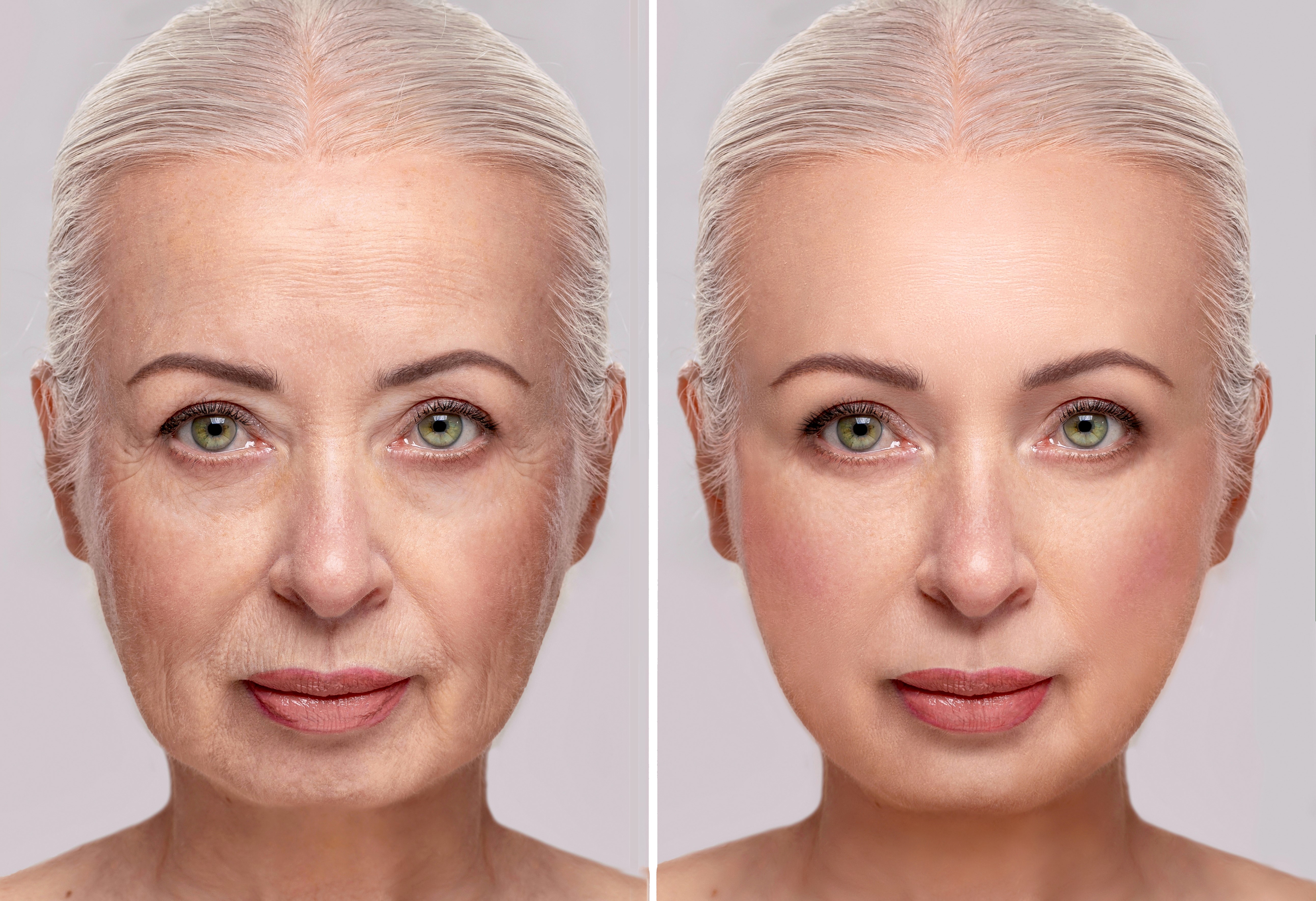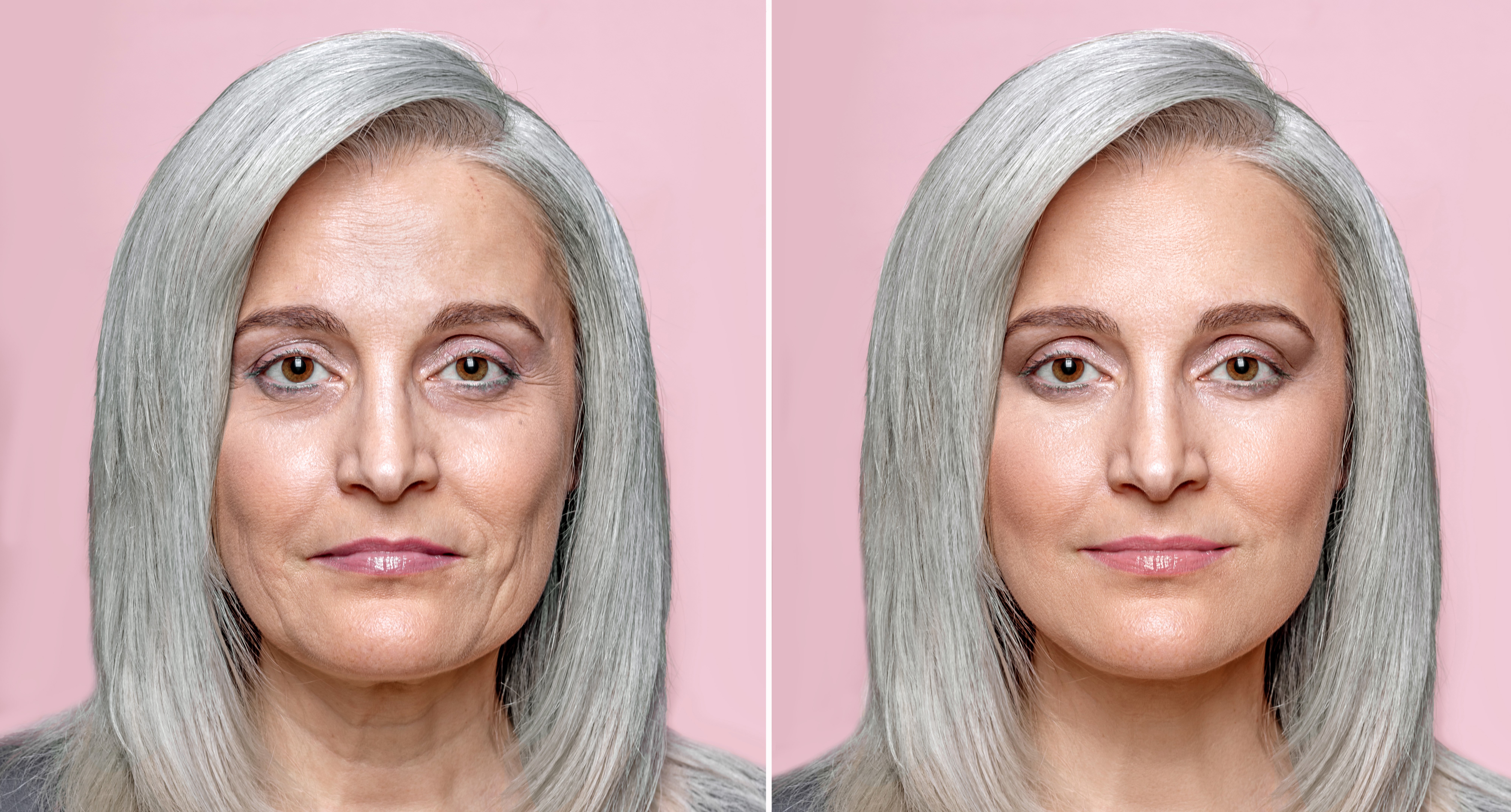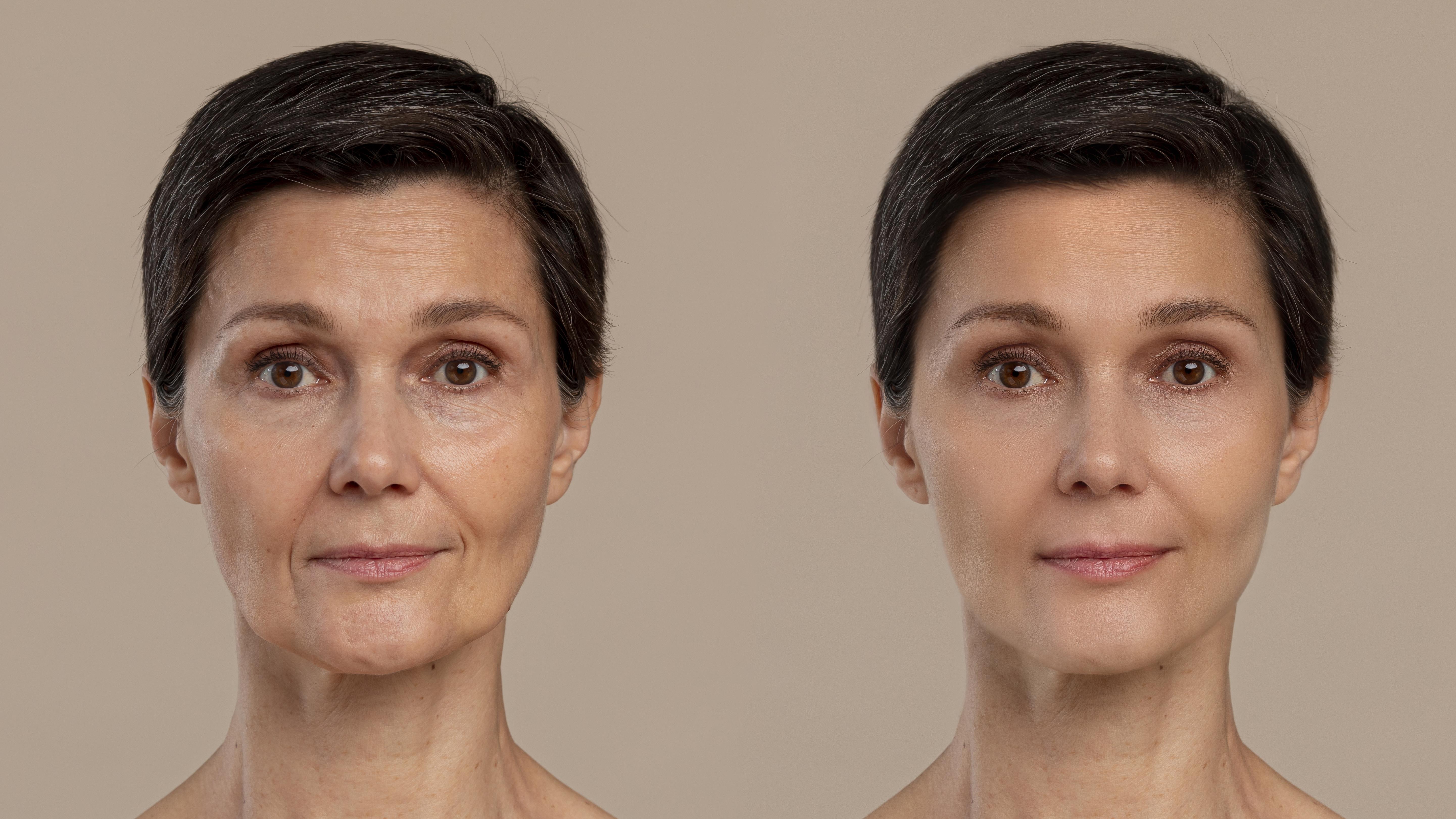What is endoscopic midface lift?
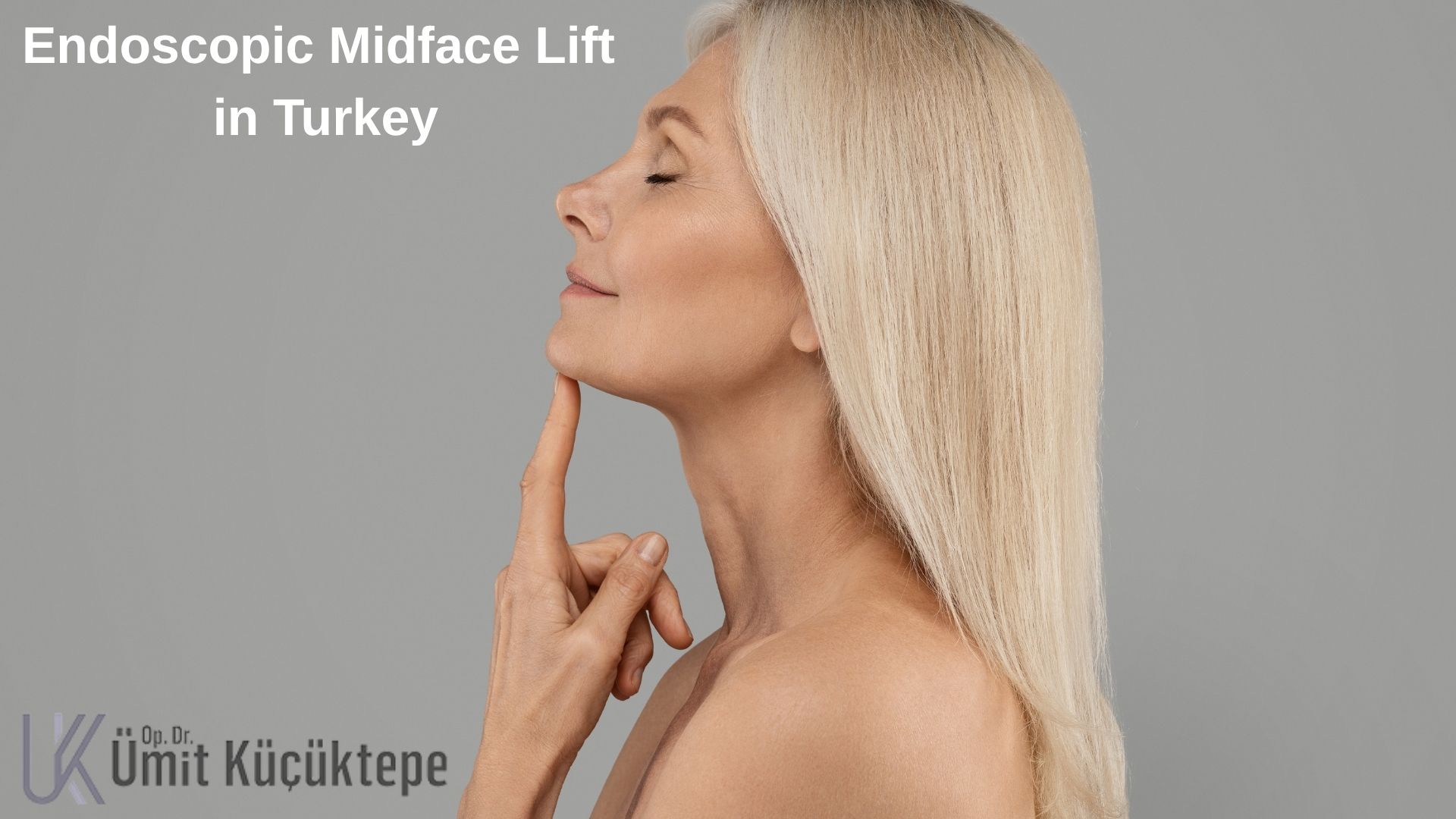
It's a scar-free way to lift sagging cheeks. Surgeons use a tiny camera to reach under the skin through small cuts near the hairline or inside the mouth. No big incisions.
The goal? Bring the cheeks back up, smooth the folds around the mouth, and refresh the eyes without pulling the skin tight.
Who is it for? Usually people in their 30s to 50s who feel like their cheeks have started to slide down or look hollow, but their jawline and neck still look good. It’s for when fillers no longer work, but a full facelift isn't needed.
How is endoscopic midface lift surgery done?
First, your surgeon administers anaesthesia so you don't feel anything. Then they make a few tiny incisions either just above the hairline or inside the upper lip. These cuts are small, hidden, and don't leave visible scars.
Next step: they insert a small camera (that's the endoscope) through those cuts. This camera displays everything beneath your skin on a screen. So, the surgeon sees exactly where to go - no guessing, no big cuts.
Then comes the lift. They gently loosen the tissues under your cheeks. Then they lift the fat pads in your midface, the ones that start to droop with age, and move them back to their original, higher position.
Once the tissues are in the right place, the surgeon secures them using small sutures or dissolvable anchors deep inside. These hold everything up.
The skin itself isn't cut or stretched. That's why it doesn't look fake or overdone.
The whole surgery usually takes 1 to 2 hours.
What to do after endoscopic midface lift surgery?
First rule: take it easy. This isn't the time to rush back into life.
The first two days matter most. Keep your head elevated even while sleeping. It helps reduce swelling. Use two pillows or sleep in a recliner. Ice packs? Yes, gently and only if your surgeon advises. For swelling and pain, it is better to use.
Keep the area clean. No touching, no pressure. Don't bend forward or lift heavy things for a week.
Workout tomorrow?
Tiny answer: big no.
Bruising and swelling are normal. They fade after a few days. Most people feel okay by day five and look fine by day ten. But final results take a few weeks to show fully.
No smoking. No alcohol. These are slow healing. Eat soft, healthy foods and drink plenty of water. Rest matters more than you think.
Your surgeon will give you special instructions; follow them closely. If you have stitches inside the mouth, avoid hot drinks and spicy foods for a bit.
It's like planting a flower! You don't poke at it while it's growing. You let it settle, water it gently, and wait.
What are the different midface lift techniques?
There's more than one way to lift the midface. It all depends on how much sagging there is, your skin type, and how natural you want the result to look.
Endoscopic midface lift
This one's the least invasive. Tiny cuts, no visible scars. Surgeons go in with a camera, lift the cheek fat pads, and anchor them higher. It's best for early signs of ageing. Quick healing. Natural look.
Deep plane midface lift
This is more advanced. Surgeons go deeper beneath muscles and fat. They lift everything together, not layer by layer. That's why it lasts longer and looks smoother. But recovery takes a bit more time.
Subperiosteal midface lift
This one's less common. Surgeons lift the tissues right off the bone, usually through the lower eyelid or inside the mouth. It gives a strong lift, especially for drooping under the eyes and deep smile lines. But not everyone needs this level of correction.
Thread lift (for midface)
Quick, non-surgical option. Doctors place threads under the skin to pull the cheeks up. It's fast, but it doesn't last very long. Think of it like taping something temporarily helpful for mild sagging, but not a long-term fix.
So, which is best?
If you want natural and subtle—go endoscopic.
If you need serious lifting, deep plane may be better.
And if you just need a little boost—thread lift might do.
Best part? You don't have to decide alone. Your surgeon helps you choose what fits your face and your goals.
What are the advantages of endoscopic midface lift surgery?
Most people want a younger look without looking like they had surgery. That's exactly where this method shines.
First, there are no big cuts. Just a few tiny ones, hidden in the hair or inside the mouth. Therefore, there are no visible scars. You can literally wear your hair up the next week.
Second, it lifts the right layer. Not just the skin, but the fat pads under the cheeks. That's what gives that natural, fresh look, not the tight, pulled-face effect.
Healing is usually faster. Less bruising. Less downtime. You'll likely feel fine in a week or two.
And the results? Subtle, but effective. It brings the midface back to where it used to be. The eyes open up. Smile lines soften.
It also lasts longer than fillers. And unlike heavy facelifts, it doesn't mess with areas that don't need lifting. Just the cheeks, the under-eyes, and a bit of the folds.
So, if you want real change without drastic moves, this technique gives you just that.
Who is a good candidate for endoscopic midface lift?
| Ideal candidate |
| Age range: 35-50 |
| Skin quality: Still elastic |
| Main concern: Sagging cheeks |
| Jawline & neck : Still firm |
| Eye area: Hollow or tired-looking |
| Desired result: Natural, subtle lift |
| Health status: Generally healthy |
If your cheeks started slipping but your jawline still looks fine, you are a good candidate!
This surgery works best for people in their late 30s to early 50s. Not too much sagging. Just that early tired look. Hollow under-eyes. Flattened cheeks. Smile lines are getting deeper. Sound familiar?
You should also have decent skin elasticity. If your skin still bounces back when you pinch it, that's a good sign.
Also, this lift doesn't touch the neck or jawline. So if that's where your concern is, this isn't the one. But if it's the midface, those apple cheeks, under-eye hollows, or early jowls, then yes, this is made for that.
If you're healthy and realistic and want a natural refresh, not a total remake, you're likely a great candidate.
How long does it take to see results from a midface lift?
You'll notice a difference right away, but it won't be the final look. The swelling starts to go down within the first 1-2 weeks. Most people start seeing the “real” change around weeks 3 or 4. But here's the thing: full results? It settles in over 2 to 3 months.
Don't worry, though. You won't be hiding for months. Most people go back to work or social life in 10 days. Just skip the heavy makeup and strong sun for a bit.
Short version?
Week 1: healing.
Week 3: progress.
Month 2: results shine.
It's not overnight, but it's worth the wait.
How long does endoscopic midface lift last?
It usually lasts 8 to 10 years. Sometimes even longer if your skin ages well and you stay healthy.
The lift repositions the deeper tissues, not just the skin. That's why it holds longer than fillers or threads. Think of it like fixing the foundation of a house, not just painting the walls.
Ageing continues, of course. But you'll still look better in year 9 than if you'd never had it done.
One more thing. Smoking, sun, and stress? They speed things up in the wrong way. But good skincare and a healthy life can stretch those results even further.
What is a temporal endoscopic midface lift?
It's a clever way to lift the outer brow, temple, and cheek without big scars. Tiny cuts go behind the hairline. A small camera helps the surgeon lift and anchor the tissues underneath.
It's ideal if your cheeks started to drop but your neck and jawline still look fine.
Healing's quick, results are subtle but real. You look like you, just better rested, lifted, and softly refreshed.
Endoscopic midface lift cost in Turkey
Prices depends on a few things. Surgeon's experience, hospital quality, city, and whether it's done alone or with other lifts.
Also, some clinics include hotel stays, transfers, and even post-op care in the price. Some don't. That's why two people can pay totally different amounts for what sounds like the same thing.
Think of it like tailoring a suit. Same fabric, but the cut, the tailor, and the extras change everything.
So, do your research. Ask what's included. And don't just chase the lowest number. A good lift lasts years. A bad one… well, it costs even more to fix.
You can contact Op. Dr. Ümit Küçüktepe to schedule a consultation and learn more about the endoscopic midface lift in Antalya. He can provide you with detailed information, assess your suitability, and share the most up-to-date pricing based on your needs. A direct consultation is the best way to get personalised advice and clear answers.
Endoscopic midface lift recovery time
Recovery is quicker than you think. Most people feel okay in a few days. But the real healing? That takes about 2 to 3 weeks.
Swollen face? Yep, at first. But it starts going down after day 3. Bruising fades around the 10th day.
The first week is all about resting. Head up, ice packs, no heavy lifting. After that, you slowly get back to normal life. Light makeup is okay after a week. Exercise? Wait 3 weeks, just to be safe.
By week 3, most people say, 'I look like me again. Just fresher.'' And that's exactly the goal.
Endoscopic midface lift before and after in Turkey
Frequently Asked Questions
How painful is an endoscopic midface lift?
Surprisingly, not that bad. During the surgery, you're either asleep or fully numb, so you feel nothing. Afterwards? It's more tightness and pressure than real pain.
Most people describe it as mild soreness, mostly around the cheeks and temples. Painkillers help a lot, and some barely even need them after day two.
So no, it's not a walk in the park… But it's far from a horror story. Just take it easy, follow your doctor's advice, and you'll get through it comfortably.
What is the best age for a midface lift?
There's no magic number, but most people consider it between mid-30s and early 50s. That's when the cheeks start to drop, smile lines deepen, and the under-eye area looks tired, even after good sleep.
Tiny question, fast answer: 'Too early at 35?' Not if you see early sagging. Genetics matter more than age.
If you do it too late, the skin may be too loose. Then, the result won't be as natural or long-lasting. Think of it like ironing a shirt before the wrinkles get too deep, timing makes a difference.
Best time? When the face starts to change.
So, watch the mirror. Not the calendar.
What other procedures can you combine with endoscopic midface lift?
Quite a few, actually. Midface lift focuses on cheeks and under-eyes. But what if your jawline's also soft? Then you can pair it with a neck lift or lower facelift. They work together like puzzle pieces completing the whole picture.
'Eyelids too?' Yep. Upper or lower blepharoplasty fits perfectly with it.
Some add fat grafting to bring back lost volume, especially around the temples or smile lines. Others go for endoscopic brow lift if their forehead looks heavy.
Is there a risk of endoscopic midface lift surgery?
Yes, but the risks are low when done by a skilled surgeon. Common ones? Swelling, bruising, mild numbness. These usually go away in weeks.
“Serious risk?” Rare, but things like infection, nerve injury, or asymmetry can happen.
Think of it like flying. Most trips are smooth, but you still wear a seatbelt just in case.
Choose your surgeon well, follow aftercare, and most of the time, the journey is safe and the result is worth it.
This article is for informational and advisory purposes. The recommendations of your surgeon, who will examine you, should be a priority.
Please contact us for more detailed information.

